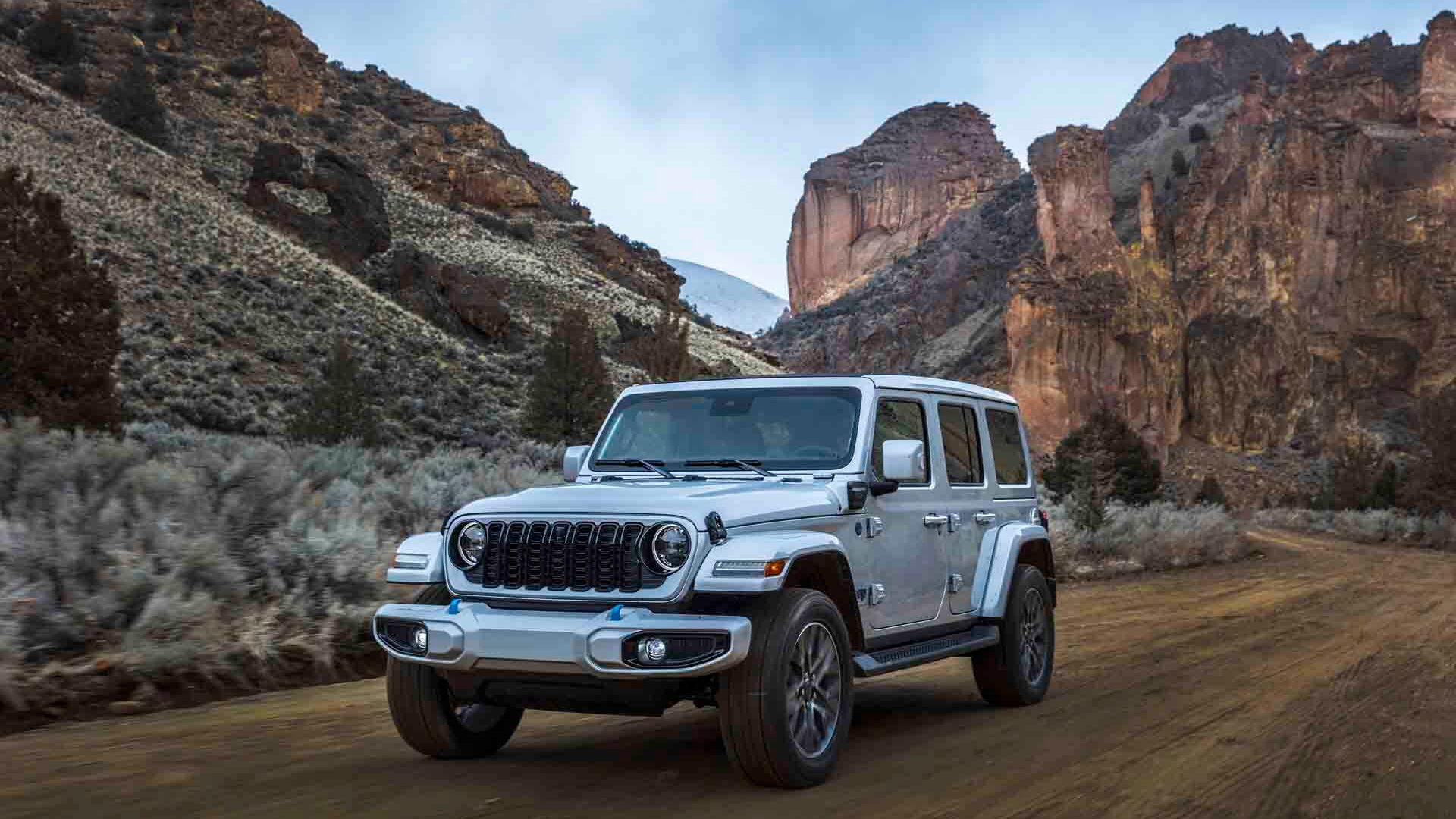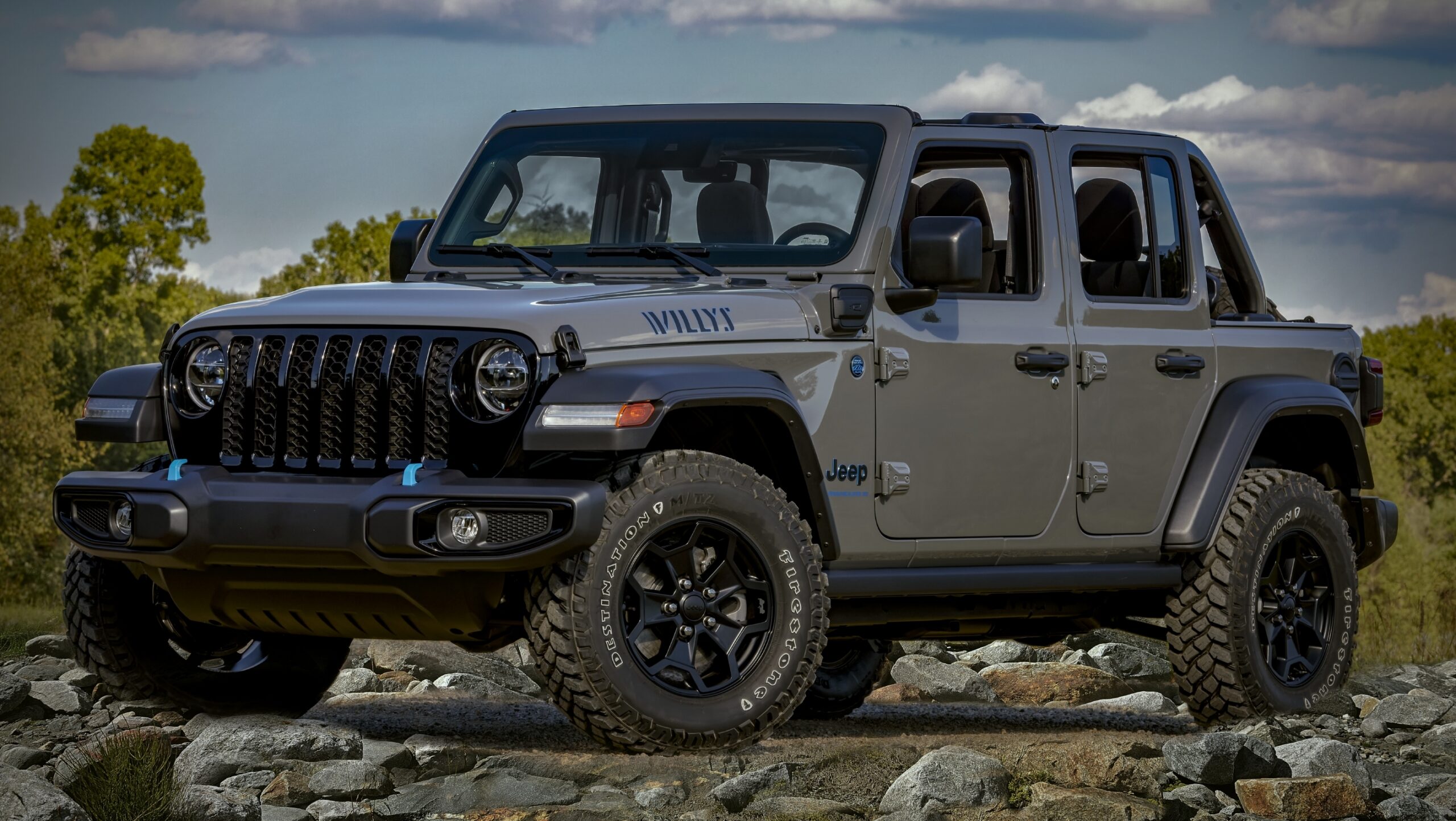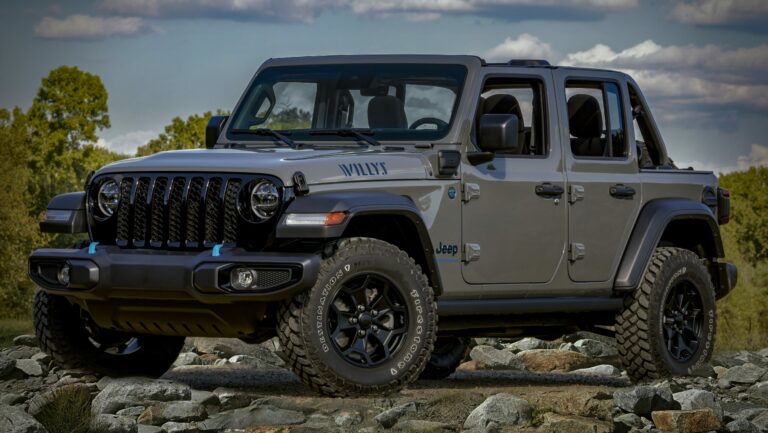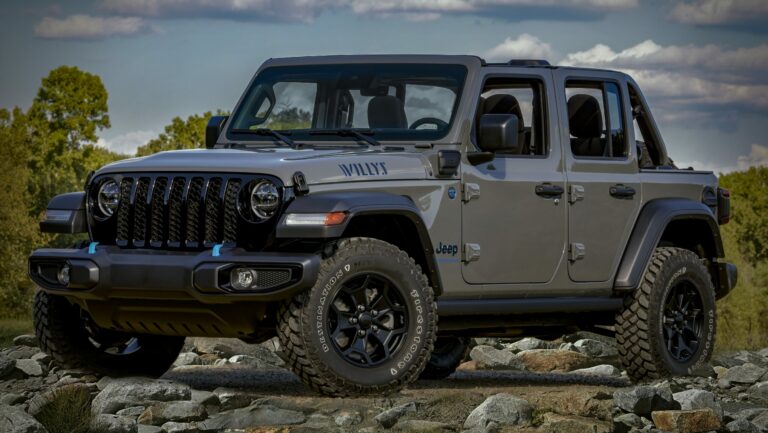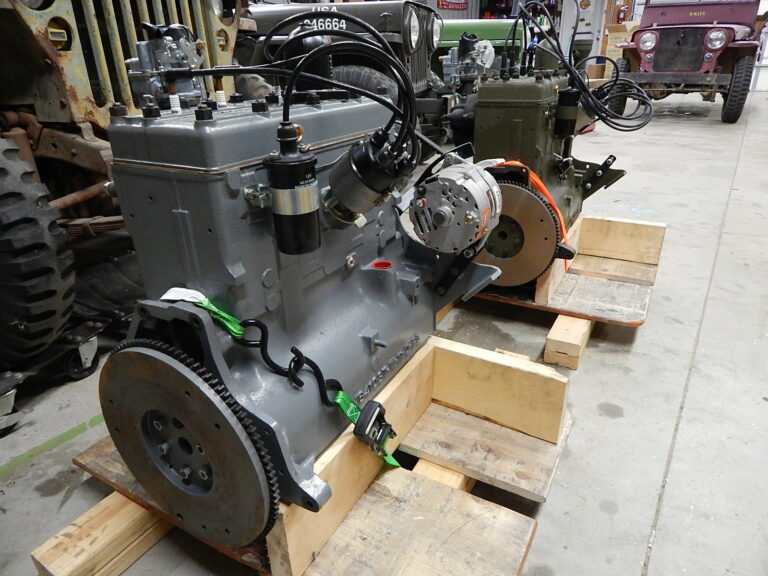The Enduring Legend: Exploring the Jeep Cherokee XJ – Often Mistaken for a ‘Wrangler XJ’ but a Star in Its Own Right
The Enduring Legend: Exploring the Jeep Cherokee XJ – Often Mistaken for a ‘Wrangler XJ’ but a Star in Its Own Right jeeps.truckstrend.com
In the vast lexicon of automotive enthusiasts, few vehicles command the same cult following and respect as the Jeep Cherokee XJ. Often, due to its unparalleled off-road prowess and rugged utility, it’s mistakenly referred to or associated with the iconic Jeep Wrangler. However, to be clear, there is no official model called "Jeep Wrangler XJ." The "XJ" designation specifically refers to the third-generation Jeep Cherokee, produced from 1984 to 2001. This article will delve deep into the world of the Jeep Cherokee XJ, celebrating its unique legacy, capabilities, and why it remains a beloved choice for both daily drivers and serious off-road adventurers, often standing shoulder-to-shoulder with its body-on-frame Wrangler cousins in capability and spirit.
The Jeep Cherokee XJ isn’t just a vehicle; it’s a phenomenon. It pioneered the compact SUV segment, offering a revolutionary unibody design that blended car-like handling and efficiency with traditional Jeep ruggedness and four-wheel-drive capability. This innovative approach made it lighter, more fuel-efficient, and more comfortable than its truck-based competitors, yet it sacrificed none of the go-anywhere attitude that defines the Jeep brand. Its enduring popularity stems from a perfect storm of simplicity, durability, massive aftermarket support, and an uncanny ability to tackle terrains far beyond its modest appearance suggests.
The Enduring Legend: Exploring the Jeep Cherokee XJ – Often Mistaken for a ‘Wrangler XJ’ but a Star in Its Own Right
The XJ Legacy: A Brief History of an Icon
Introduced in 1984 under the ownership of American Motors Corporation (AMC), the Jeep Cherokee XJ was a radical departure from its predecessors. Designed from the ground up, it was the first Jeep to utilize a unibody (monocoque) construction, where the body and frame are integrated into a single structure. This design choice, initially met with skepticism by some traditionalists, proved to be a stroke of genius. It offered increased rigidity, reduced weight, and improved ride quality without compromising structural integrity for off-road use.
Over its nearly two-decade production run, the XJ saw several iterations and engine options, though the most revered and sought-after is undoubtedly the 4.0-liter inline-six cylinder engine, introduced in 1987. Chrysler’s acquisition of AMC in 1987 further solidified the XJ’s future, ensuring its continued refinement and market presence. By the time production ceased in North America in 2001 (though it continued in China until 2005), the XJ had sold millions of units, cementing its place as one of the most successful and influential SUVs ever made.
Why the XJ Endures: Key Features & Benefits
The Jeep Cherokee XJ’s enduring appeal lies in a combination of factors that make it a uniquely capable and versatile vehicle, especially appealing to those who value simplicity and robust performance.
- The Legendary 4.0L Inline-Six Engine: This engine is the heart and soul of many XJs. Known for its incredible durability, ample low-end torque, and relatively straightforward mechanics, it’s a powerplant that can seemingly run forever with basic maintenance. Its robust nature makes it ideal for both daily commuting and strenuous off-road excursions.
- Unibody Construction: While some might see unibody as a weakness for off-roading compared to body-on-frame, the XJ’s integrated structure is surprisingly strong and offers a more comfortable ride on pavement. It also allows for a lower center of gravity and excellent articulation when paired with solid axles.
- Solid Axles: Unlike many modern SUVs that have transitioned to independent front suspension, the XJ retained solid front (Dana 30) and rear (Dana 35 or optional Dana 44) axles. This design provides superior articulation and durability in challenging off-road conditions, allowing wheels to maintain contact with uneven terrain more effectively.
- Compact Size & Excellent Visibility: The XJ’s relatively narrow and short wheelbase (compared to full-size SUVs) makes it incredibly nimble on tight trails. Its boxy design translates to excellent outward visibility, a crucial advantage when navigating obstacles.
- Simplicity and Ease of Maintenance: The XJ is a mechanically simple vehicle. This means fewer complex electronic systems to fail, easier diagnosis for common issues, and a vast community of DIY mechanics who readily share knowledge and solutions. Parts are generally affordable and widely available.
- Vast Aftermarket Support: Due to its immense popularity, the aftermarket industry for the XJ is enormous. From lift kits, armor, and suspension components to engine upgrades and interior accessories, owners can customize their XJ to suit virtually any need or preference, making it a highly adaptable platform.
![]()

Off-Road Prowess: Capability & Customization
The Jeep Cherokee XJ truly shines when the pavement ends. Stock XJs are surprisingly capable, thanks to their short overhangs, decent ground clearance, and robust 4×4 systems (Command-Trac for part-time 4WD, Selec-Trac for full-time 4WD). However, its true potential is unleashed through customization.
Enthusiasts regularly transform their XJs into formidable off-road machines. Common modifications include:
- Lift Kits: Ranging from mild 2-inch lifts for tire clearance to extreme 6+ inch lifts for rock crawling, these improve ground clearance and articulation.
- Larger Tires: Crucial for traction and overcoming obstacles.
- Axle Upgrades: Swapping out the weaker Dana 35 rear axle for a more robust Dana 44 or even an 8.25-inch Chrysler axle, or adding lockers for improved traction.
- Skid Plates and Rock Sliders: Protecting vital components from trail damage.
- Winches and Recovery Gear: Essential for self-recovery or assisting others.
The XJ’s lightweight unibody, combined with its solid axles and powerful 4.0L engine, creates a platform that can effortlessly crawl over rocks, traverse muddy trails, and navigate challenging landscapes. Its blend of utility, space, and rugged capability makes it a favorite for overlanding and general trail exploration.
Buying an XJ: What to Look For
Purchasing a used Jeep Cherokee XJ requires careful inspection, as most models are now over two decades old. Here’s what to prioritize during your search:
- Rust: This is the primary killer of XJs. Thoroughly inspect the floorboards (especially under the carpet), rocker panels, frame rails (unibody pinch seams), and rear quarter panels. Rust on structural components can be costly to repair.
- 4.0L Engine Condition: Check for oil leaks (especially the rear main seal, which is common but not necessarily critical if minor), excessive smoke from the exhaust, and unusual noises. Listen for a smooth idle and strong acceleration. Inspect the cooling system for leaks or signs of neglect (dirty coolant).
- Transmission Health: The AW4 automatic transmission is renowned for its reliability. Check for smooth shifts and no slipping. If it’s a manual (AX15), test the clutch and ensure gears engage smoothly.
- Suspension & Steering: Look for worn bushings, saggy leaf springs (common in the rear), and play in the steering components (tie rod ends, ball joints). "Death wobble" is a known XJ issue, often caused by worn steering or suspension parts.
- Electrical Gremlins: While generally simple, XJs can have minor electrical quirks. Test all lights, windows, wipers, and dashboard gauges.
- Four-Wheel Drive System: Engage 4WD high and low to ensure they work correctly. Listen for grinding or clunking.
A pre-purchase inspection by a trusted mechanic familiar with older Jeeps is highly recommended.
Maintenance & Common Issues
Owning an XJ means embracing its quirks and committing to regular maintenance. Many common issues are easily addressed:
- Cooling System Overhaul: The 4.0L engine runs hot. Replace the radiator, water pump, thermostat, and hoses if their history is unknown.
- Oil Leaks: The rear main seal and valve cover gasket are common leak points. While the rear main seal is a bigger job, many owners live with minor leaks, topping off oil as needed.
- Saggy Rear Leaf Springs: Over time, the rear leaf springs flatten, causing a lower ride height. Aftermarket replacement springs or "add-a-leafs" are common solutions.
- Death Wobble: This violent steering wheel shake is usually caused by worn steering components (track bar, tie rod ends, ball joints) or incorrect alignment/tire balancing.
- Cracked Exhaust Manifold: A common issue causing an exhaust leak noise, often leading to a check engine light. Easily replaced.
With consistent fluid changes, attention to the cooling system, and proactive replacement of worn components, an XJ can provide many more years of reliable service.
XJ vs. Wrangler: A Common Comparison
The confusion between "Wrangler XJ" and the actual Jeep Cherokee XJ often arises because both are highly capable off-roaders and share the Jeep brand’s DNA. However, they are fundamentally different vehicles designed for distinct purposes:
- Construction: The XJ Cherokee features a unibody construction, integrating the frame and body. Wranglers (YJ, TJ, JK, JL generations) utilize a traditional body-on-frame design, making them inherently more modular for extreme modifications and often more resilient to frame twist in very severe off-roading.
- Interior Space & Utility: The XJ offers a fixed roof and a more conventional SUV interior with significantly more cargo space and passenger room, making it a better family vehicle or daily driver. Wranglers prioritize open-air freedom with removable tops and doors, sacrificing some interior comfort and cargo capacity.
- Ride Comfort: Generally, the XJ’s unibody design provides a smoother, quieter, and more car-like ride on pavement compared to the more truck-like feel of most Wranglers.
- Cost-Effectiveness: Due to their age and initial lower price point, XJ Cherokees typically offer an incredible bang for the buck as an off-road platform or a rugged daily driver. Wranglers, especially newer generations, command a higher price tag.
Ultimately, the choice between an XJ and a Wrangler depends on individual needs. The XJ is ideal for those seeking a balance of daily drivability, cargo capacity, and serious off-road capability on a budget. The Wrangler appeals to those prioritizing extreme modularity, open-air experiences, and perhaps the ultimate off-road prowess in a stock or mildly modified form.
Estimated Used Market Prices for Jeep Cherokee XJ
Given that the Jeep Cherokee XJ ceased production in North America in 2001, there are no "new" prices. The market consists entirely of used vehicles, and their value fluctuates wildly based on condition, mileage, modifications, and regional demand. The table below provides a general estimate for the North American market, but these are highly variable.
| Condition Category | Description | Estimated Price Range (USD) |
|---|---|---|
| Poor | Significant rust, major mechanical issues, non-running, salvage title. Often purchased for parts or as extreme project vehicles. | $500 – $2,500 |
| Fair | Runs and drives, but has noticeable rust, cosmetic flaws, and/or minor mechanical issues requiring attention. Suitable for a budget build or daily driver with work needed. | $2,500 – $5,000 |
| Good | Minimal rust, decent paint, generally reliable mechanics, minor cosmetic flaws. May have some aftermarket modifications. Good daily driver or solid platform for upgrades. | $5,000 – $9,000 |
| Excellent | Very little to no rust, excellent paint and interior, well-maintained mechanics. May be stock or tastefully modified with quality parts. Collector-grade or highly desirable. | $9,000 – $20,000+ |
Note: Prices can vary significantly based on location, specific year (e.g., late model 2000-2001 tend to be higher), engine/transmission combination, mileage, and the quality/extent of any aftermarket modifications.
Conclusion
The Jeep Cherokee XJ, despite often being misidentified or confused with the Wrangler, stands as a monumental achievement in automotive history. It defied conventional design with its revolutionary unibody, yet delivered the rugged capability synonymous with the Jeep brand. Its powerful 4.0L engine, solid axles, compact dimensions, and robust aftermarket support have cemented its place as a true off-road legend and a highly practical daily driver for those who appreciate its no-nonsense utility. For budget-conscious adventurers or those seeking a versatile and endlessly modifiable platform, the XJ remains an unbeatable choice. It is a testament to timeless design and engineering that, even decades after its production ended, the Jeep Cherokee XJ continues to inspire a passionate community and conquer trails around the globe, proving itself a star in its own right.
Frequently Asked Questions (FAQ) about the Jeep Cherokee XJ
Q1: Is the Jeep Cherokee XJ the same as a Jeep Wrangler XJ?
A1: No, there is no official model called "Jeep Wrangler XJ." The "XJ" designation refers specifically to the Jeep Cherokee (1984-2001), which is a unibody SUV. The Jeep Wrangler is a separate line of body-on-frame vehicles (YJ, TJ, JK, JL generations) known for their removable tops and doors.
Q2: What are the best years for a Jeep Cherokee XJ?
A2: Most enthusiasts prefer the "late model" XJs, specifically 1997-2001, due to their updated interior, improved unibody stiffening, and generally more refined features while still retaining the beloved 4.0L engine and solid axles. Pre-97 models are also highly capable but have different aesthetics and some minor differences in components.
Q3: Is the 4.0L engine in the XJ reliable?
A3: Absolutely. The AMC 4.0L inline-six engine is renowned for its legendary reliability and durability. With proper maintenance (especially a well-maintained cooling system), these engines are known to last for hundreds of thousands of miles.
Q4: How much does it cost to lift a Jeep Cherokee XJ?
A4: The cost varies widely depending on the lift height and the quality of components. A basic 2-3 inch budget boost or spring lift can start from a few hundred dollars. A comprehensive 4.5-inch or more long-arm lift kit with new shocks, control arms, and other necessary components can easily range from $1,500 to $4,000+, not including installation costs or other associated upgrades like bigger tires.
Q5: What are the most common problems with a Jeep Cherokee XJ?
A5: Common issues include rust (especially on rocker panels and floorboards), oil leaks (rear main seal, valve cover gasket), cooling system issues (due to age), saggy rear leaf springs, and occasional electrical gremlins. "Death wobble" is also a common complaint, usually stemming from worn steering or suspension components. Most of these issues are well-documented and have readily available fixes.
